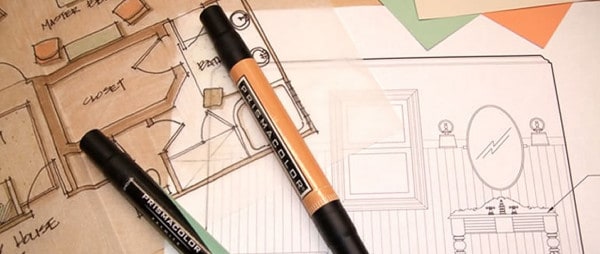So you want to start an interior design business?
Maybe you have something dreamed up in your head about having the best design business out there?
Your eager self is very much pumped up on the idea, but the thing is, you have no idea where to start. Interior designers create functional, attractive interior places through the use of color, furnishings, and decor!
Good thing we are here to help get started going full-on business and make money with your awesome skills!
Art is a tricky thing to put a price on, and sometimes the price you think your work is meant for isn’t really what others value it at.
A good thing about interior design business and interior design, in general, is that their artistic vision for each project is mostly dependent on their client’s taste, style and whatever function they require the space to have. The interior designer’s role is to give that vision proper direction so that the end result is a quality space that’s cohesive and functional. Ultimately, pricing will depend on how far the client wants to go with his/her vision.
How to Open an Interior Design Business
The interior design and home improvement industry is sizzling hot. And there’s a good reason why cable TV networks like HGTV, The Learning Channel, and DIY Network have such a huge following everywhere!
Everyone wants their environment to be comfy and pleasant, and it looks like that trend is showing no signs of cooling off.
Right now is no better time than to tool up your skills and fire up your enthusiasm starting a business in this creative and fulfilling field!
Let’s get started!
Step 1: Learn How an Interior Design Business Works
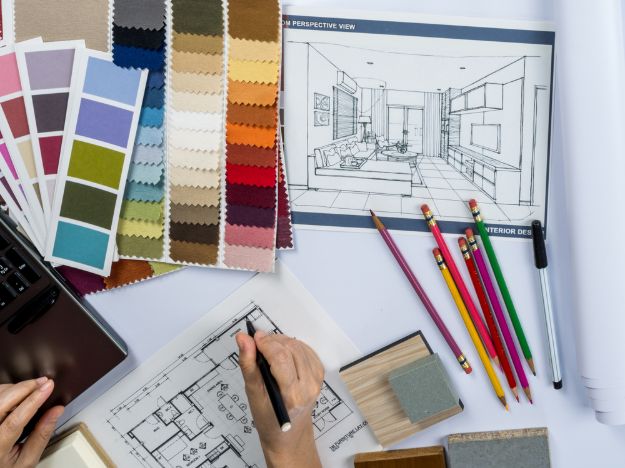
The best way to learn something is by doing! And it is no different for an interior design business!
If you ever had the skill for planning spaces and organizing home furnishings and accessories, then this could be the line of business for you! The goal of interior design businesses is to improve and update the appearance of interior living or work spaces to make them more functional, appealing, organized and more fitting to the needs of the owner or occupants while keeping to a pre-specified look or theme. The business could provide services for both suburban and business-like settings.
However, there are some interior design businesses that choose to focus on particular types of design. An interior design business can choose to focus on either kitchen design, bathroom design, living room design etc. An interior design business could also make extra income by selling a variety of custom furniture and accessories.
The best option to learn more about this kind of business is to work for one! Spending some time working for a successful interior design business, allows you to learn how to run your future shop the right way. Make use of time. Ask questions. Take on as many tasks and responsibilities as you can.
Think of ways that their processes can be improved further so you can make your upcoming business better.
Talk to customers!
Ask them why they go to this business instead of others. What makes an interior design business stand out amongst its peers?
Learn about the legal requirements of owning an interior design business. Know what kind of business permits and employee requirements are needed to run it.
Figure out what equipment you’ll need (and how much it’ll cost)!
Everything you’re doing here is detailed market research. So the more of market research you do, the better. It all ties into understanding the nature of the business itself, and this can help you create a plan.
Step 2: Create a Plan
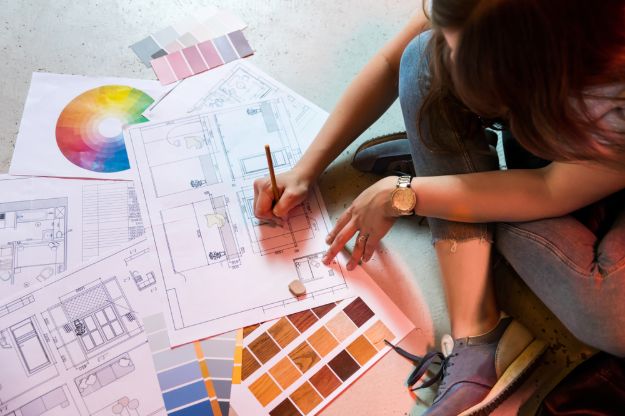
Why do interior design businesses fail?
The truth is, interior design businesses fail for the same reason as many other businesses do.
Businesses fail because of the lack of a solid business plan.
Your plan is your road map. Invest sufficient time, effort, thought, and research into creating your business plan so that when you start your interior design business, you don’t have to stop and think about what to do at every turn.
At this point, this is when you decide what kind of interior design business you want to be.
What kind of business entity will your company be? Would it be a sole proprietorship, partnership, or a corporation?
By mapping out every decision, cost, and expectation ahead of time, you’re saving yourself time and money down the road by allowing yourself to budget accordingly and price compare options.
This would also be the best time to research your competition, define and understand your target market, and think about your design and style.
If you’re not sure where to start, Startup Jungle can help you create an expertly organized and professional business plan for your interior design business.
Just email bplan@startupjungle.com, and we’ll give you the help you need.
Step 3: Discover Earning Potential
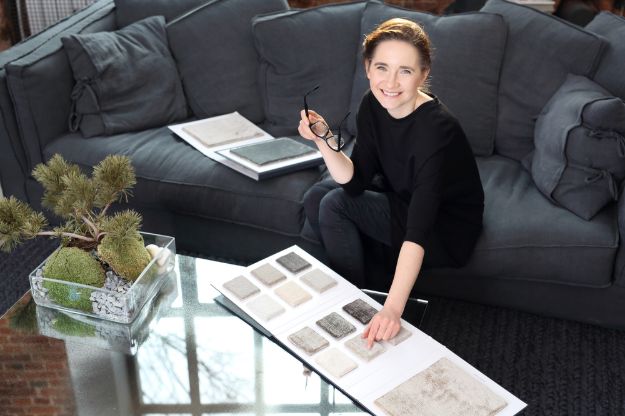
In the interior design business, your earning potential depends on what type of services your business specifically provides.
This may be confusing at first as setting a price for design services could be affected by all kinds of things such as materials to use and how challenging a project is. Time could also affect service fees. Of course, you’d also need to consider the difference between how much an experienced designer charges for services compared to how much a less experienced one does.
In 2011, interior designers earned a middle-point wage of $47,620 a year. But according to the BLS, interior designers’ pay was higher than the once-a-year middle-point for all U.S. jobs of $34,465. Designer pay varied based on experience and background. The bottom 10 percent of earners took home an average wage of $25,720 a year, while the top 10 percent averaged $86,430.
Interior designers earn more in some businesses. Used merchandise stores pay interior designers the most, with a mean once-a-year wage of $73,180 a year, according to the BLS.
The federal executive branch ranked second for pay, with a mean of $72,490. Interior designers who worked for newspaper, magazine, book and directory publishers took home a mean of $66,850.
Lower-paying parts/areas for interior designers included furniture stores, which paid a salary of $46,290, and building material and supply dealers, which paid $46,710.
Step 4: Set a Budget
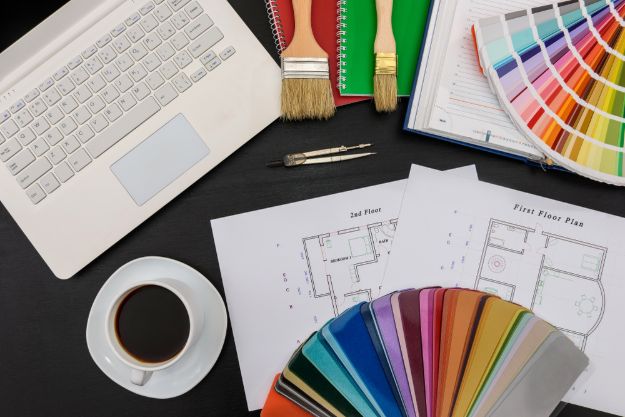
How much does it cost to run an interior design business?
There are many things needed to run any type of business, and costs to run can be few and plenty.
Here are some important points to think about when planning for your interior design business:
Studio Webware $45/month: The premiere accounting and project management system for interior designers. Learn it early and it will save you so much time and energy.
Insurance $500-$1200: Not optional. Protect your clients and yourself. Costs depend on coverage and location.
LLC $300-$1000: Yes, it doesn’t cost anything to be the only owner, however, that leaves your personal financial value at stake.
Website free – $2000: You can go with a free website service, all the way to a custom site.
Business cards $50-200: Spread the word that you’re open for business. Don’t worry too much about a custom designed logo or branding in the beginning.
Lawyer $300-$500: Hire a lawyer to review your contract. Do not do any work without a lawyer-approved contract. Again, protect your clients and yourself.
Business licenses free-$100: Depending on your location, you’ll need different business licenses and resale permits. These are necessary for doing business in many areas, but usually are very reasonable.
In the first phases of your business, drawing out a list of costs will allow you to take note of the amount you would be spending.
Aside from this initial list, these are some other costs to think about:
- Office Space
- Equipment
- Supplies & Utilities
- Communications.
- Accounts & Taxation
- Market Research
- Reference Books
- Advertising & Marketing
Step 5: Decide What Kind of Services to Offer
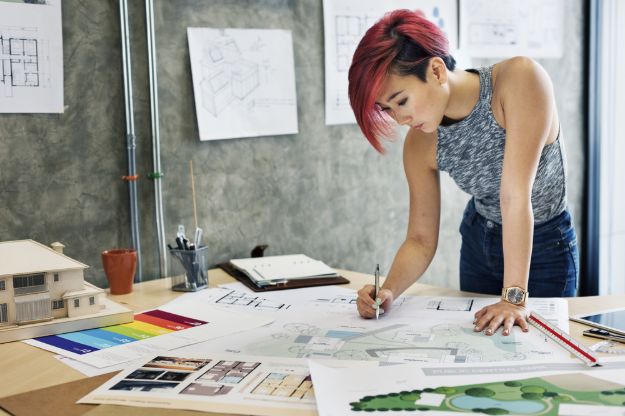
Interior design businesses usually focus on creating and displaying special services to its clients. Thinking what these services are will make a difference on what your initial earnings would be from your new business.
Assess the skills you and your staff of designers are good at, as that could be a good starting point in knowing what kinds of services you can offer to clients.
Here are some ideas for the different types of services your interior design business could offer:
Interior Redesign
Interior redesigning services usually involve the rearranging or repurposing of furniture and accessories into the same space. This is the usual business model of many interior design businesses.
Interior redesign businesses can focus on two major services. You can choose for your business to focus on a suburban or commercial redesign or you can opt to focus on real estate staging.
Professional Organizing
Professional organizing services is another business model that focuses more on organizing the mess in people’s homes and businesses to help them live simpler and more organized lives.
In addition to the help they give, they also develop organizational plans that involve filing and storage systems that their clients can use to maintain their newly organized spaces.
While this business model has slowly been gaining popularity in recent years, there aren’t much statistical information on the number of professional organizers practicing. The upside of this business model is that it needs little to no educational requirements, few equipment/tool costs and no licensing issues making this one of the easiest home design businesses to start with.
Restoration/Preservation
This type of service has professionals in one type of home project, such as carpentry, or may act as general contractors and handle different types of projects on homes and businesses that were built before 1930.
These professionals also use their skills to preserve and save objects like furniture and accessories. This service focuses on either restoring buildings or objects to their former state or preserving them in their current condition.
Step 6: Decide on a Location
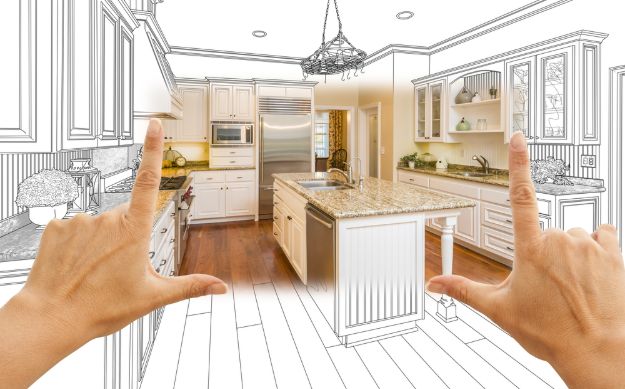
The location is everything for a business. Figure out what type of facility you require and where it needs to be located in your city. Ask yourself:
Owning a franchise means that you will be responsible for its marketing, sales, accounting, customer service, and quality assurance in order for this company to succeed.
But before you start thinking of going the franchise route, you should look at your finances. Can you even afford to buy a franchise? Will you be able to borrow money? Will you be able to wait for the franchise to start turning a profit?
Hiring an accountant may help you evaluate your finances and decide if buying a franchise is a possible option for you.
Research is key here, there is a lot of information available to help you make that choice.
But If you’re thinking about buying an existing company, it’s important to prepare a list of questions to ask when buying a business before you make a decision.
Investing in a business is a big decision, and it’s certainly one that you shouldn’t make without having all the important facts understood.
Step 7: Find Suppliers
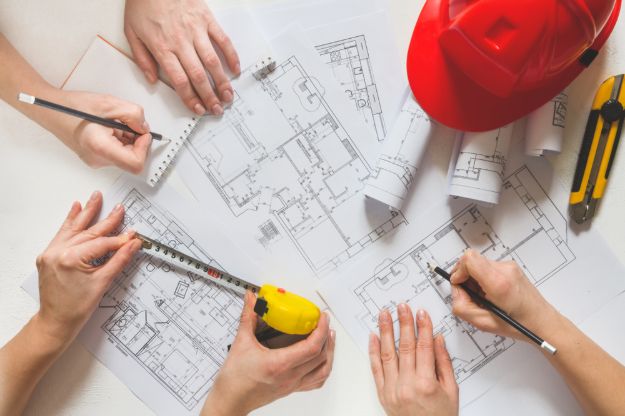
What kind of supplies do you need for your interior design business?
As a business, it helps you make money not only from your customers but from the suppliers that you will be promoting in your product materials lists. Contact those suppliers and talk about your rates on materials and valuable supplies with them ahead of time.
To have a better idea on what supplies you need to get your interior design business running, here’s a reference for basic supplies to get you started.
These are great resources for decor and furniture:
For decorating ideas and inspiration:
Step 8: Promote Your Interior Design Business
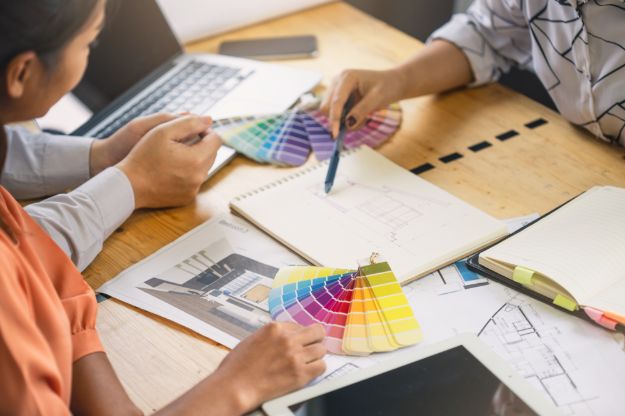
After you’ve set up the first parts to your interior design business, how do you go about making your business known to the public?
Well, there’s the old fashioned way and the modern technology way. You should be doing both!
Get some visible signs so people can easily see your business as they pass by. Use attractive and professional designs to get people attracted.
Unless you know someone who really likes your interior design or decorating work, it’s unlikely that you’ll land a contract right away.
But advertising right away with a website, social media, or even flyers helps you reach just about anyone.
But what can you advertise? Depending on the types of services your business does.
What about a design package deal complete with a table or board filled with possible furnishings, materials, and decor, plus a product source list with items and prices? Add to that a color palette and fabric guide, top it off with a floor plan showing where the furniture and lighting would go, and you have a good start for anyone looking for design and/or decoration ideas!
And as far as digital marketing goes, creating a page on Facebook is a good start. Be quick to respond to posts or messages to your page to make sure of high customer service!
Step 9: Create a Staffing Plan
Just like any other business, you can’t do everything on your own.
You’ll either be in such a rush that you’ll make mistakes, or take so long that customers will leave. Either way, your service, reviews, and customer loyalty will all suffer as a result.
An effective and efficient staffing plan ensures consistency so that customers always have the same great experience!
So to make sure you have these great employees, figure out what skills and traits you’re looking for, how many employees you need, where to find them, what your interview process would look like, how to train them, and how to properly schedule them.
Coming up with a staffing plan ahead of time will save you considerable time and effort down the road.
Step 10: Decide on a Style/Design
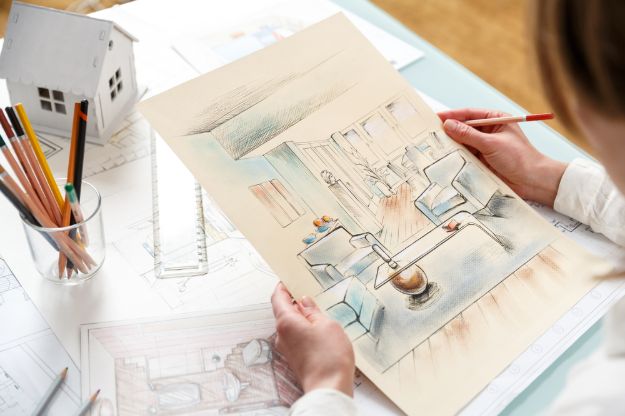
Deciding on a style for your interior design business can be a challenge.
As an interior design business, your business space aesthetic should somehow showcase your abilities as a designer and an artist. You want your space to represent your personality and style but not scare away any clients who may not share your aesthetic for bright neons. Talk to your ideal customers and see what they like!
Look online or at other interior design offices that love for inspiration. But whatever design you decide on, make sure to consider efficient workflow for employees, as well as adequate flow pattern for customers.
For a logo, you can go to 99designs. For as little as $99, designers compete for the prize with their designs giving you a pool of high-quality concepts to choose from for a reasonable price.
Name Ideas for Interior Design Businesses:
| A Classy New Look |
Accents of the South |
| Acumen Design |
Ann Carter Design Inc. |
| Betsy Brown, Ltd. |
Botania Gardens |
| Business Interiors Inc. |
By Design Interiors Inc. |
| Castle Design |
[Your Name] Interiors |

Step 11: Create an Accounting Plan
Having an accounting plan is not a “nice to have” option. It’s a must have.
As a business, your taxes will always come under scrutiny. So it’s critical to have every dollar accounted for and everything in order.
Equally important, you’ll be able to project your sales more easily with proper tracking, in addition to knowing if you are on track to stick to your budget. You’ll also be able to tell if anything is missing from your store. Make an accounting plan part of your store’s security measures.
Here is a few accounting software we have seen:
Step 12: Get Into the Interior Design Community
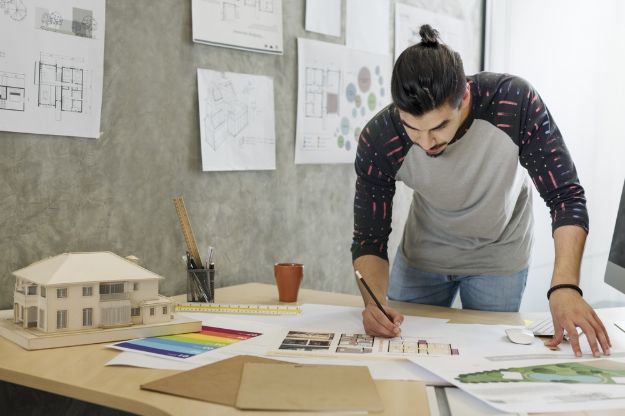
If you’re joining a franchise, you’ll have franchise showcases and updates to follow, as you’re buying into a community.
This gives you such a huge boost in running your business because you’ll be surrounded by a support group who wants to see you succeed.
Be sure to join organizations such as the International Interior Design Association and the American Society of Interior Designers. Having a network of members to converse with will help you find clients. this will allow you to scale up your online business much faster than going it alone.
Other Design Organizations you should look at:
The Bottom Line
As with any business, it’s hard to get it started and even harder to keep it going!
The game is constantly changing, and keeping up with all the latest design trends will be a challenge. Your target market will always be looking for something new and refreshing because they will want a cool and unique look for their environments.
But with a little time, effort, and a sprinkling of artistic passion and you will start to see that starting up your own business will be the best choice you’ve ever made.
If this was helpful for you and you want to learn more about opening an interior design company, Startupjungle.com has a 21 point checklist for starting your new business. Make sure you download this if you’re serious about getting started.
